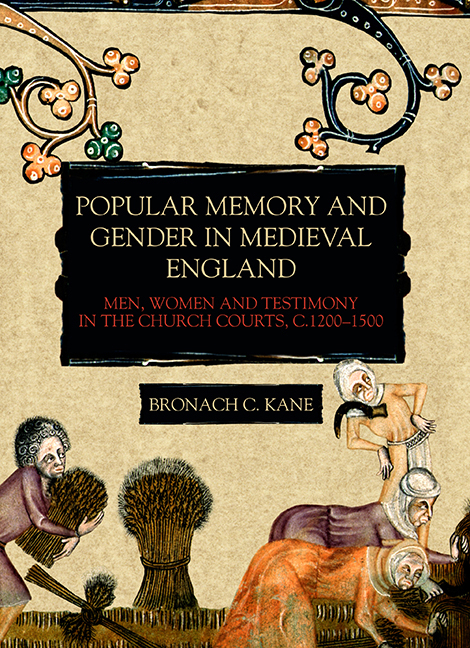 Popular Memory and Gender in Medieval England
Popular Memory and Gender in Medieval England Published online by Cambridge University Press: 03 September 2019
From the emergence of classical architectures of memory to their medieval revival in modified form, the places and spatial tone of remembrance dominated discussion in intellectual treatises. Attributed most often to the ancient Greek poet Simonides, this system of learned mnemotechnics entailed the allocation of memory images to assigned places from which they could be retrieved with greater ease. This elite practice declined as a method of recalling the past during the early and high Middle Ages, only becoming more widespread in schools and monasteries from the thirteenth century onwards. Despite the intellectual foundations of architectural memory, the local environment had long structured the memories of inhabitants regardless of their literate expertise. Literate practices were increasingly prevalent in late medieval culture but, as discussed in the previous chapter, the use of written records was not yet evenly distributed across the social levels. Familiar landscapes and places were therefore one of the most prominent ways of storing and prompting memories in everyday life.
The historical analysis of space, landscape, and place has developed in tandem with the expansion of tools for exploring the physical environment, resulting in the ‘spatial turn’ in history over the past two decades. Earlier works in historical geography conceptualised physical pasts primarily through the static lens of place, but more recent studies in the social sciences note the extent to which space was a more active site of cultural and economic production, including the reification of class relations. Sociologists and human geographers highlight the social construction of space and the landscape, emphasising their fluid nature and their ideological composition. Henri Lefebvre outlined an influential tripartite system which comprised practices of lived space and its accompanying routines; representational space which embodied knowledge about space and its construction; and symbolic space expressed through ideological beliefs and images. The shifting dynamics between narrative structure and the physical environment can also produce ‘spatial stories’, through the arrangement of places and spaces ‘in linear or interlaced series’. From the perspective of legal testimony presented to the church courts, witnesses recalled journeys between sites and spaces in ways that conveyed specific representations of past events and relationships.
To save this book to your Kindle, first ensure no-reply@cambridge.org is added to your Approved Personal Document E-mail List under your Personal Document Settings on the Manage Your Content and Devices page of your Amazon account. Then enter the ‘name’ part of your Kindle email address below. Find out more about saving to your Kindle.
Note you can select to save to either the @free.kindle.com or @kindle.com variations. ‘@free.kindle.com’ emails are free but can only be saved to your device when it is connected to wi-fi. ‘@kindle.com’ emails can be delivered even when you are not connected to wi-fi, but note that service fees apply.
Find out more about the Kindle Personal Document Service.
To save content items to your account, please confirm that you agree to abide by our usage policies. If this is the first time you use this feature, you will be asked to authorise Cambridge Core to connect with your account. Find out more about saving content to Dropbox.
To save content items to your account, please confirm that you agree to abide by our usage policies. If this is the first time you use this feature, you will be asked to authorise Cambridge Core to connect with your account. Find out more about saving content to Google Drive.